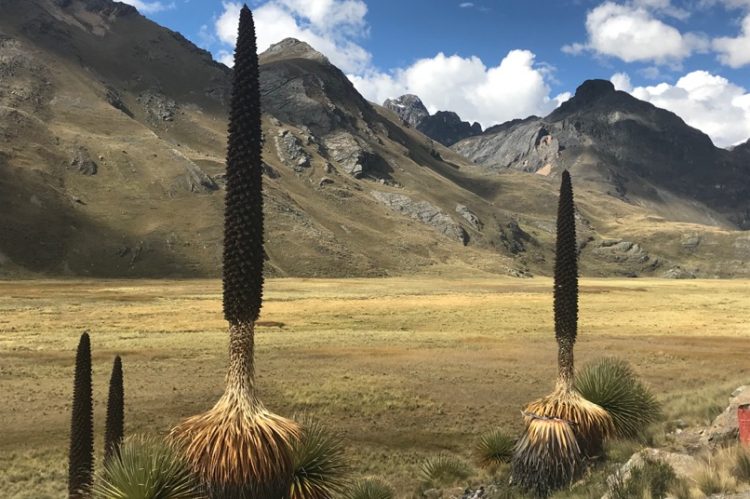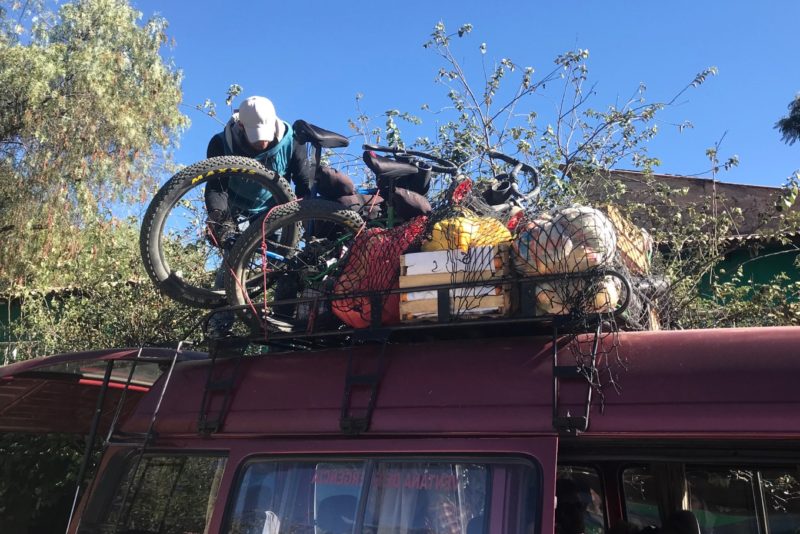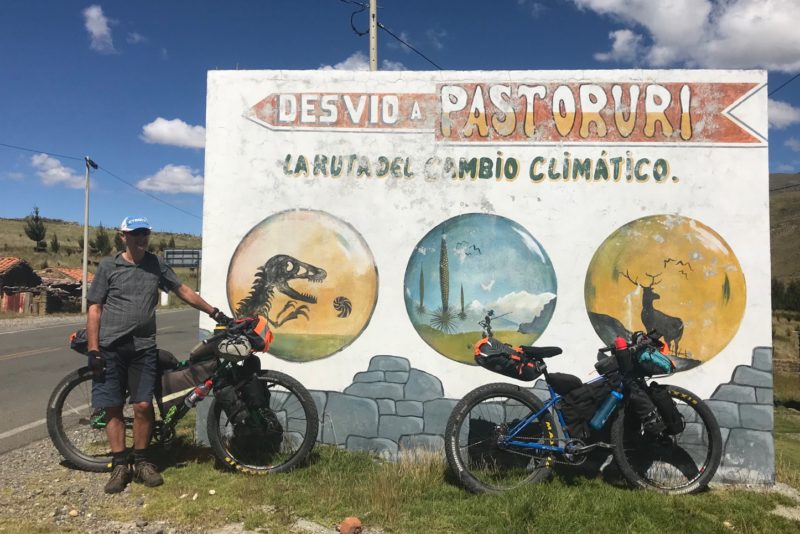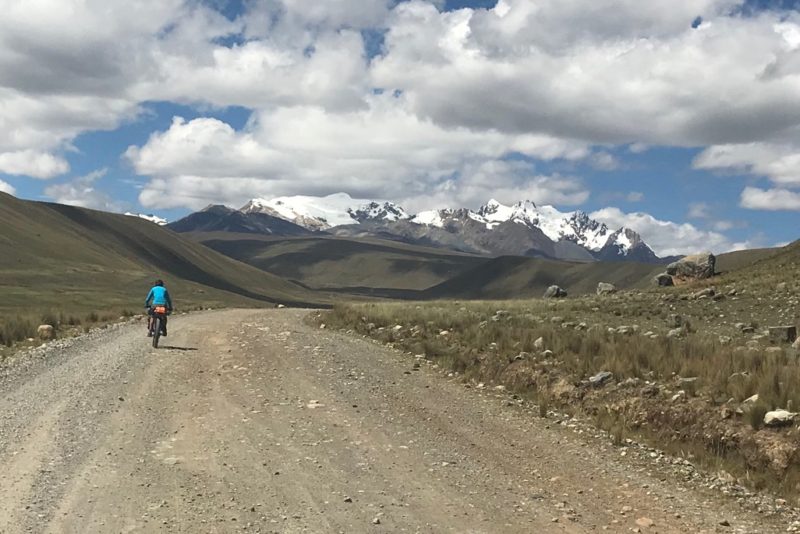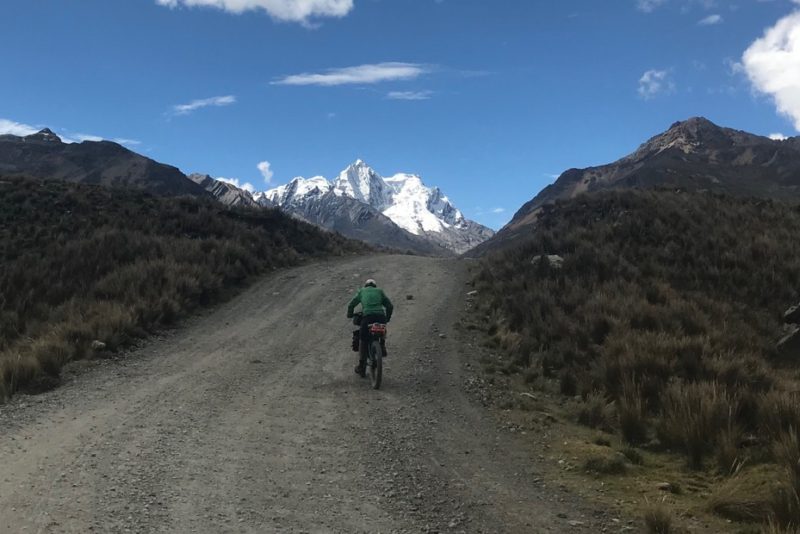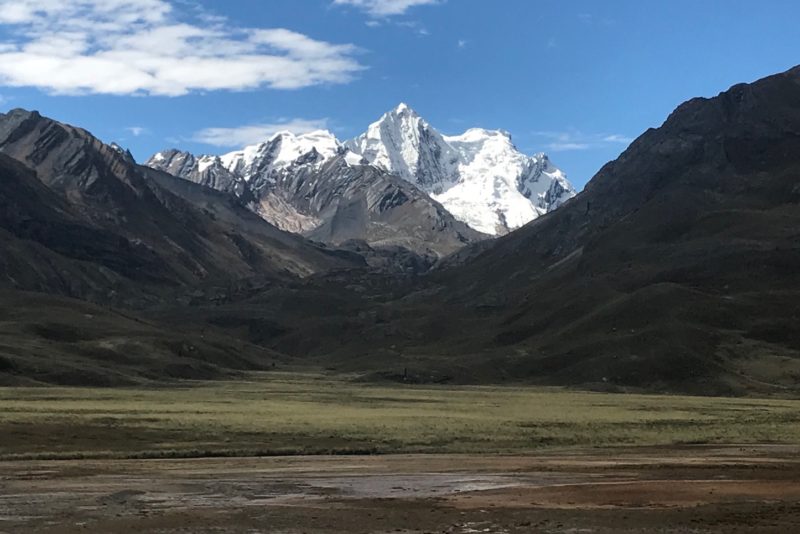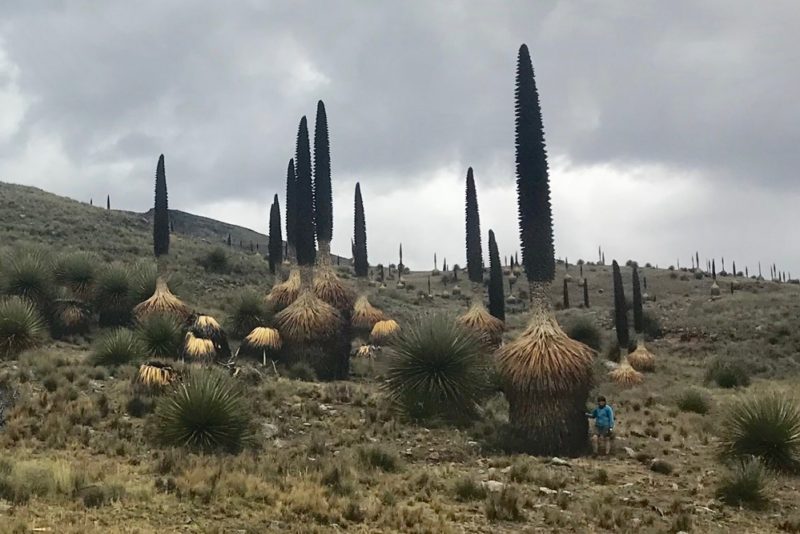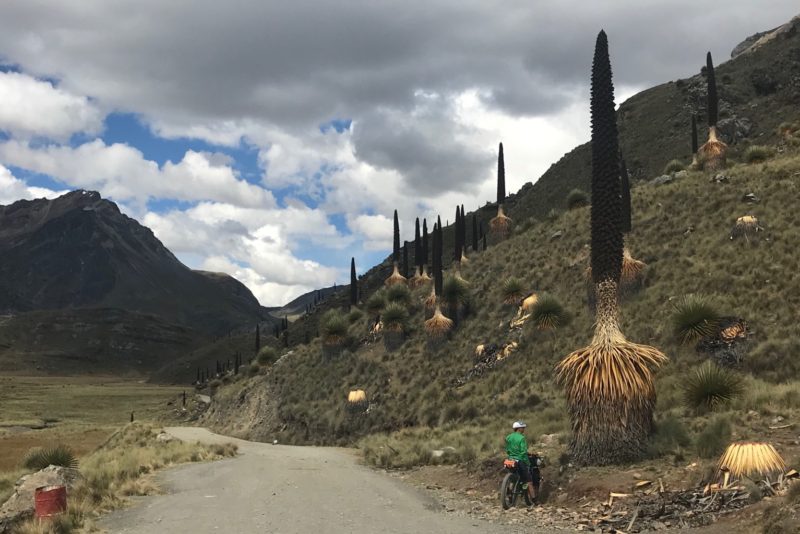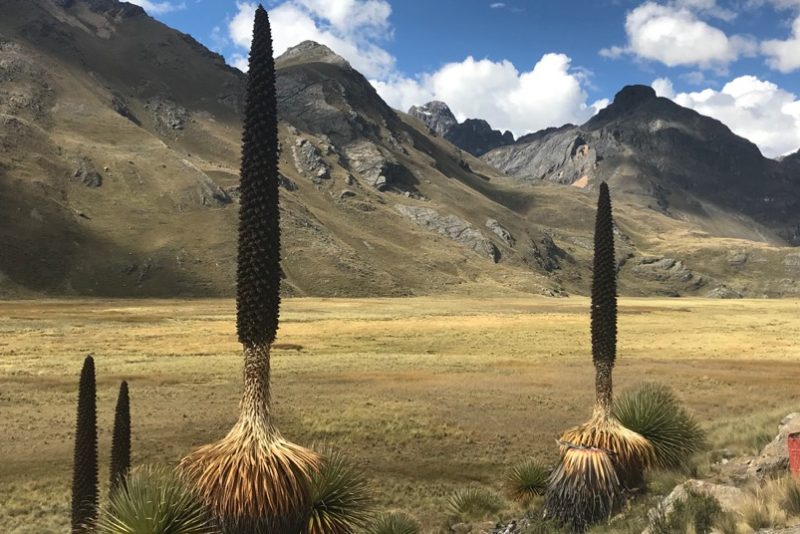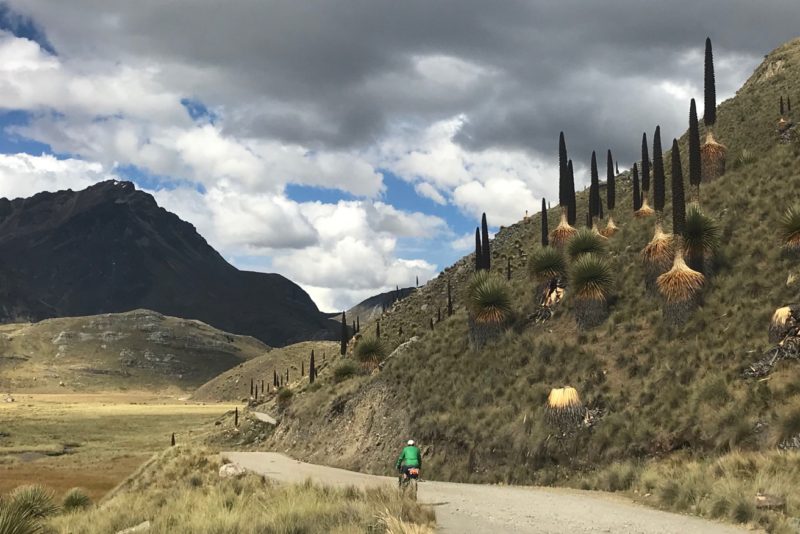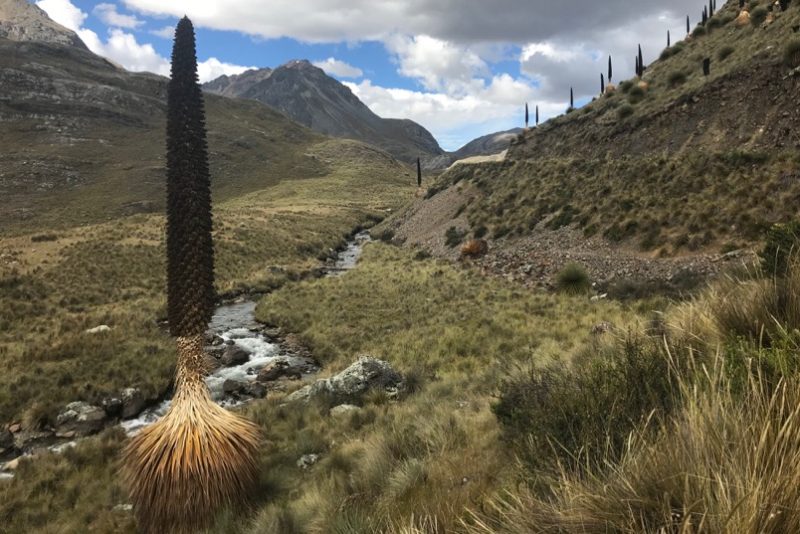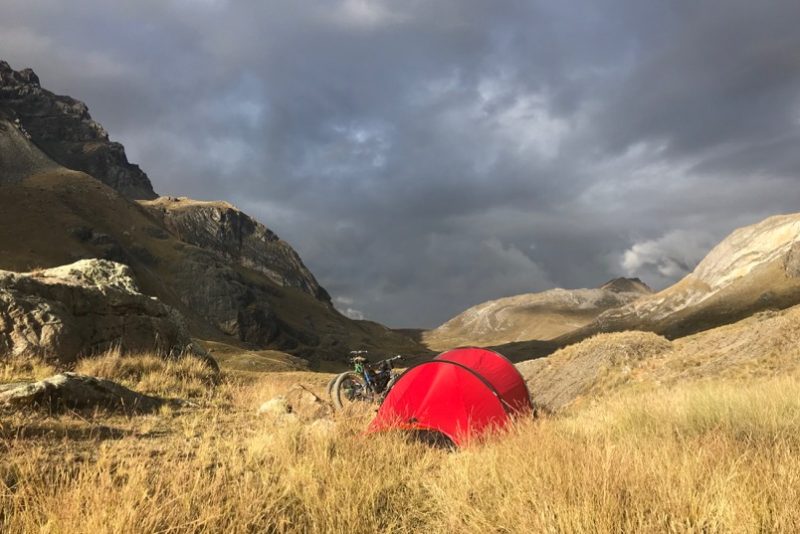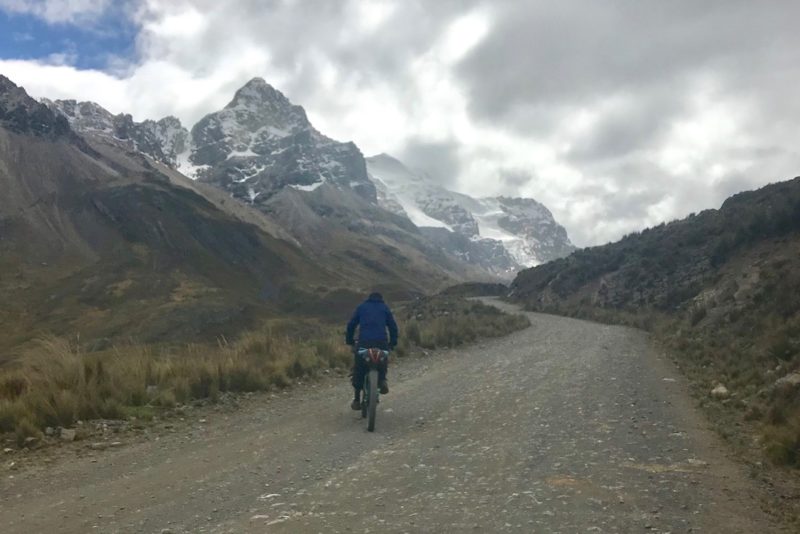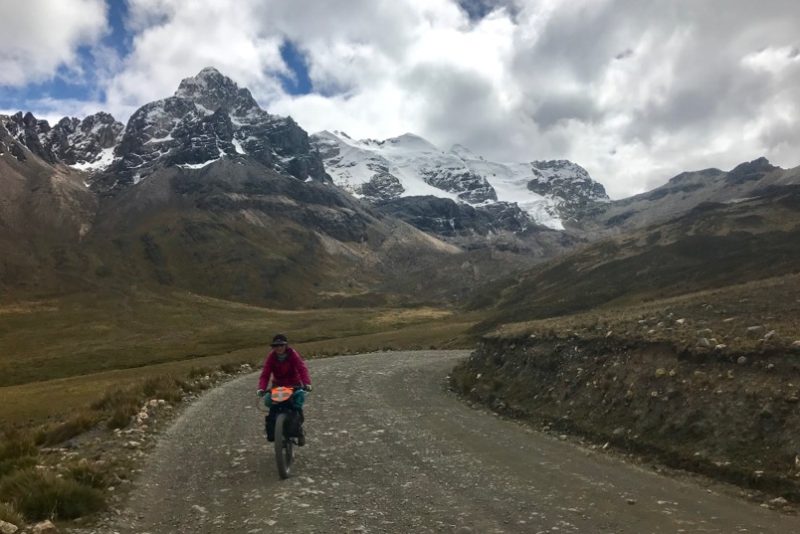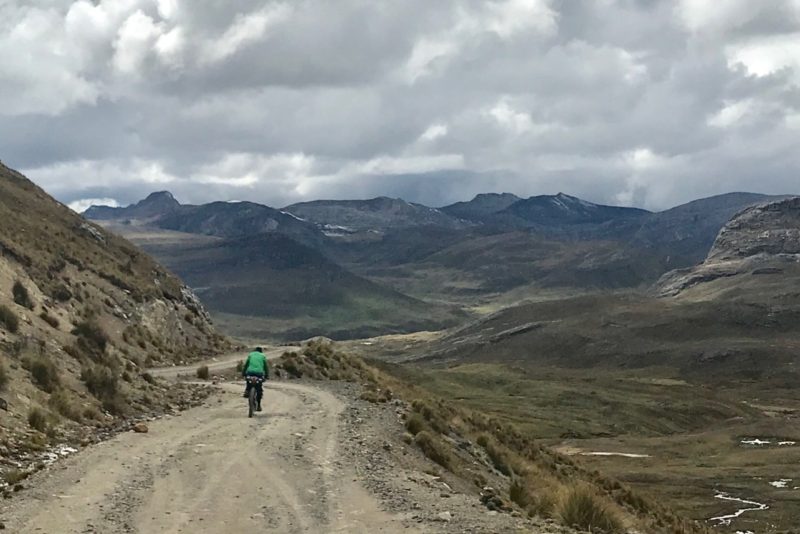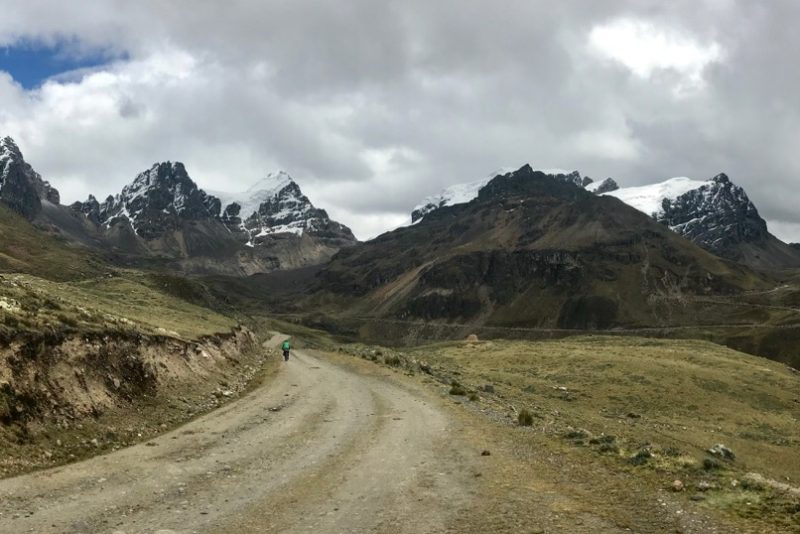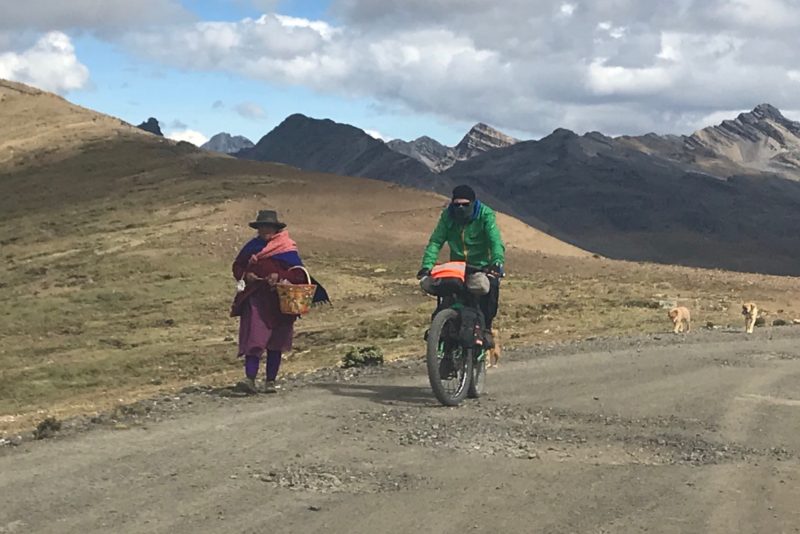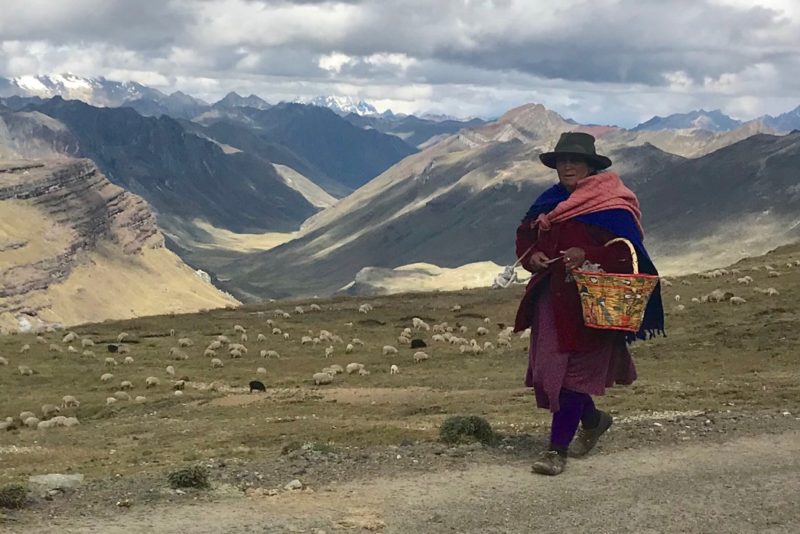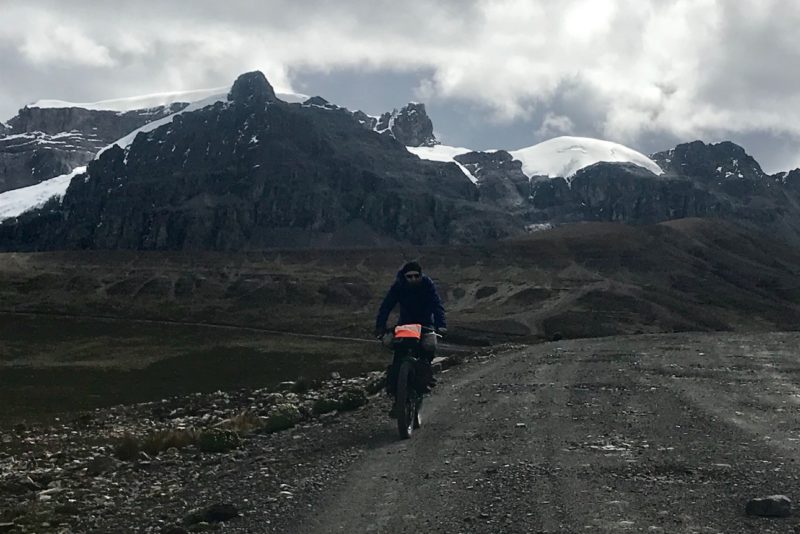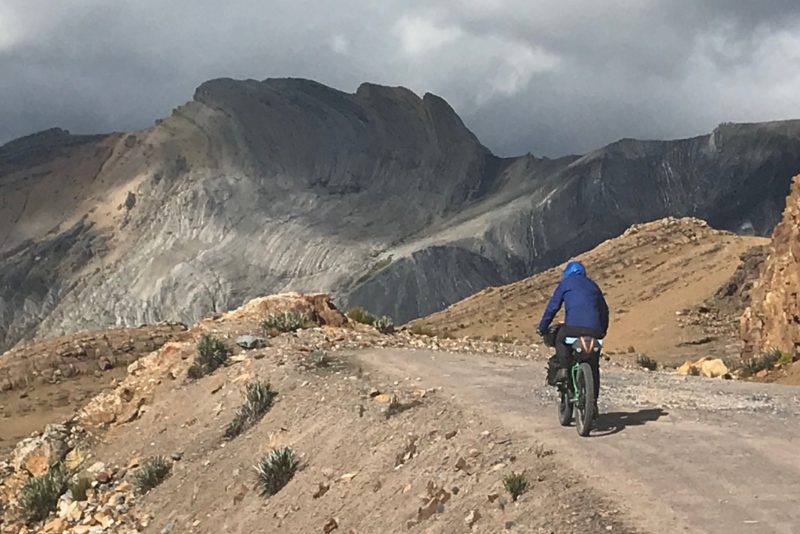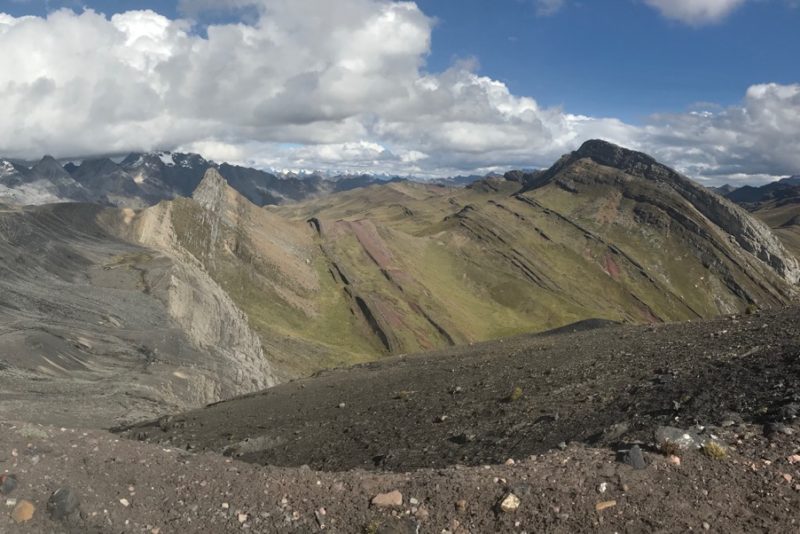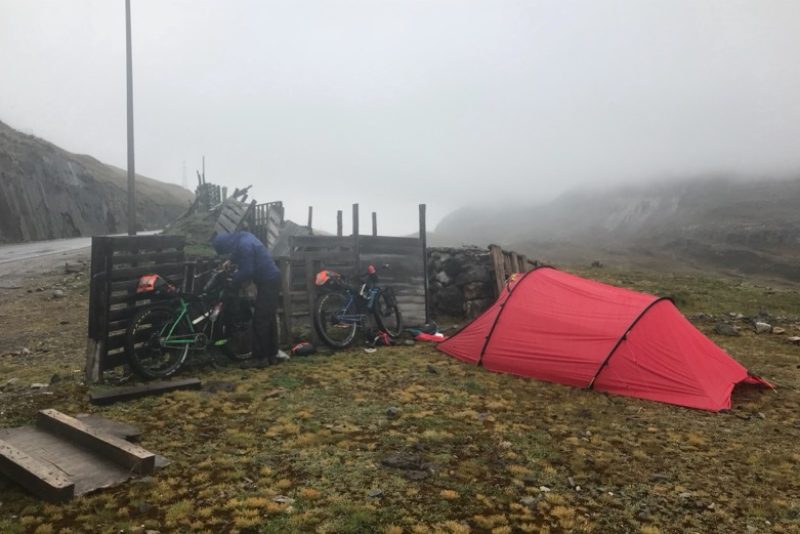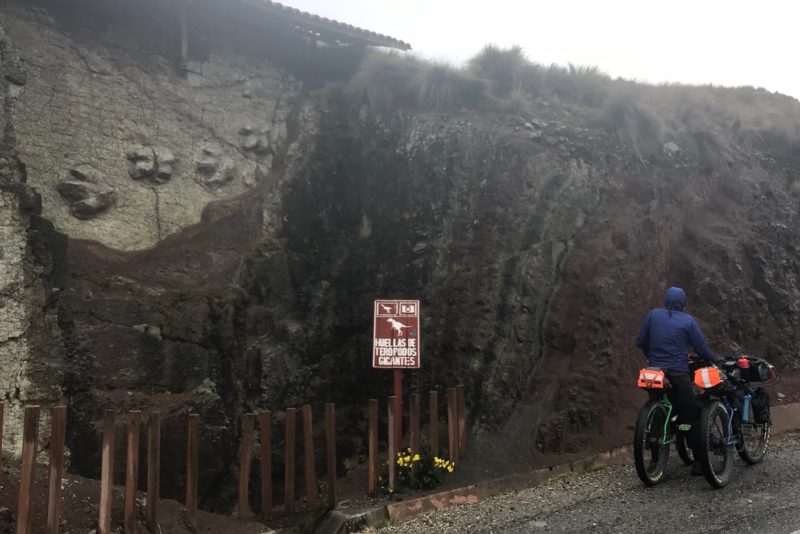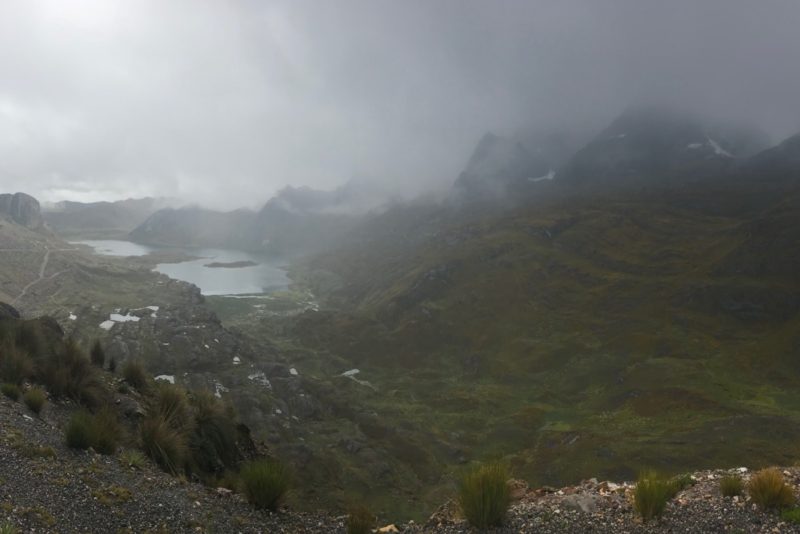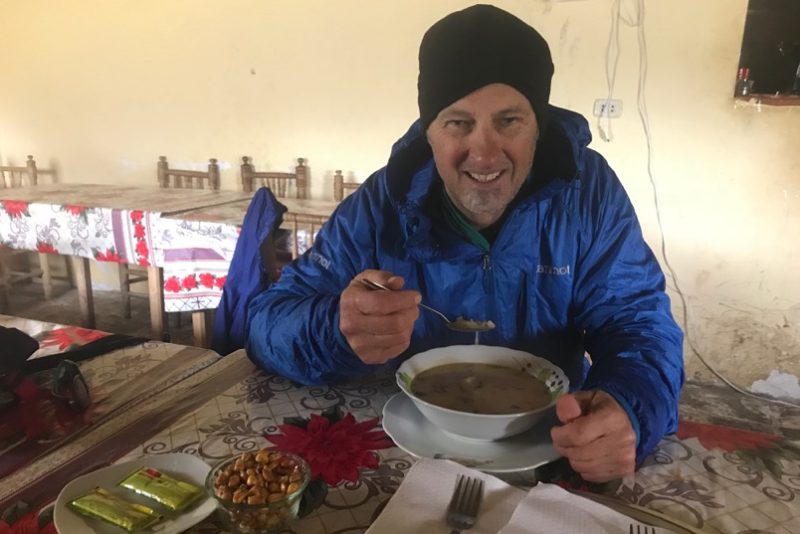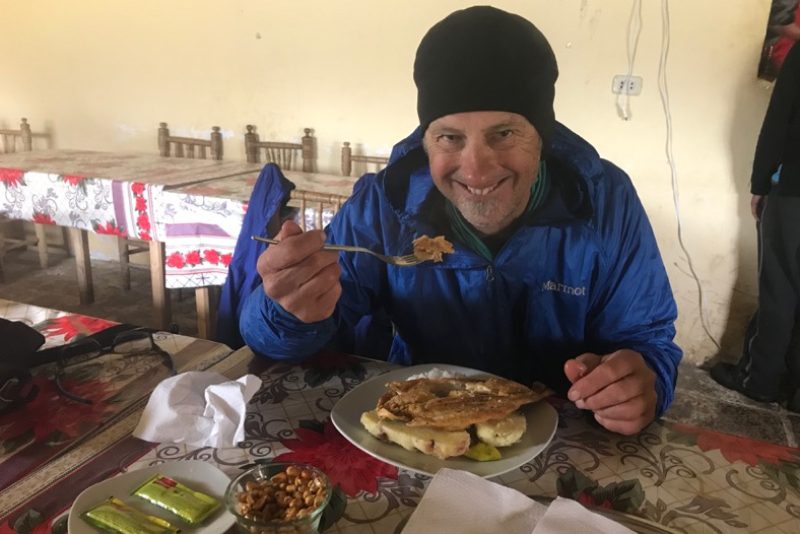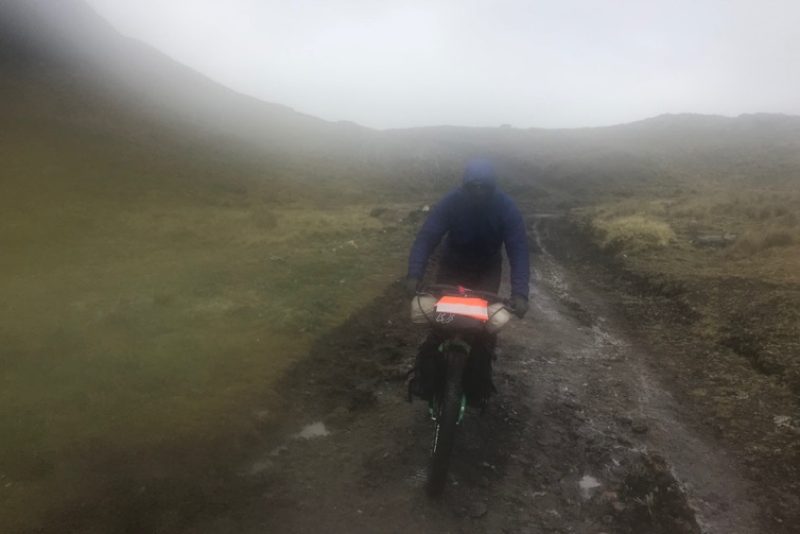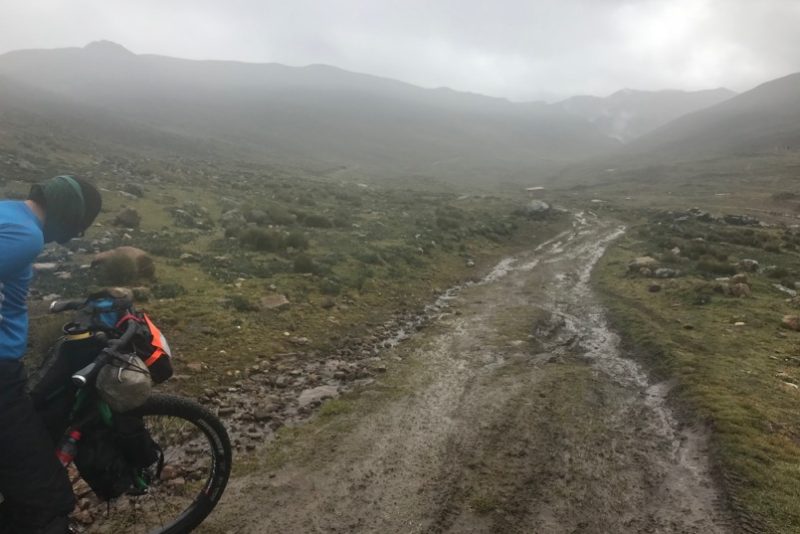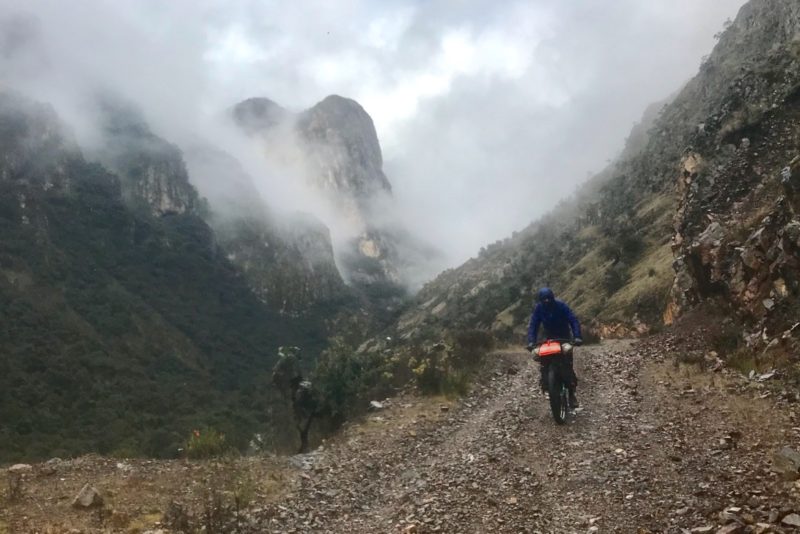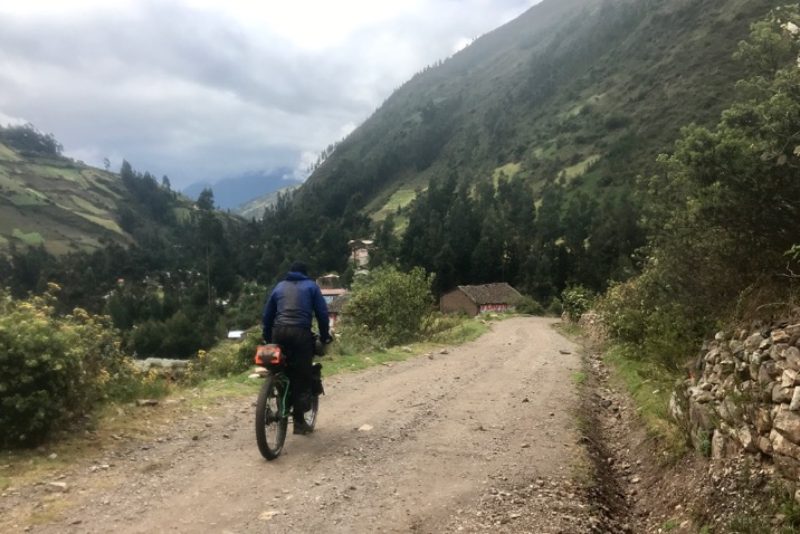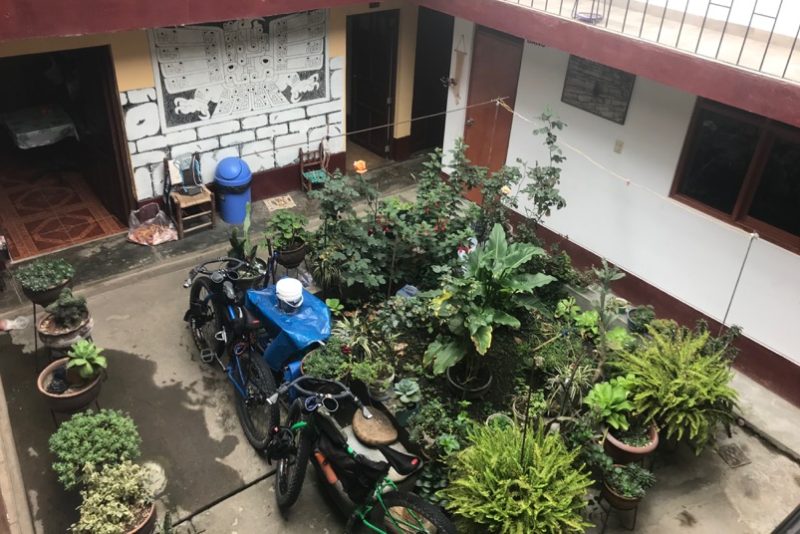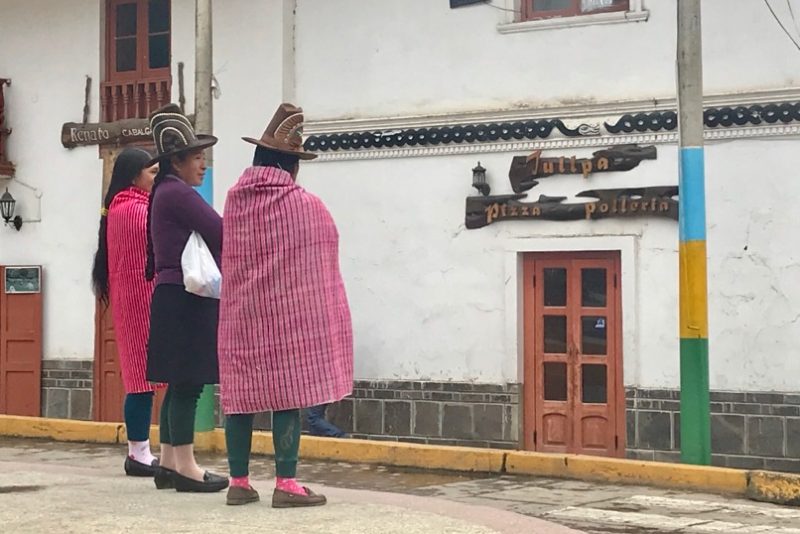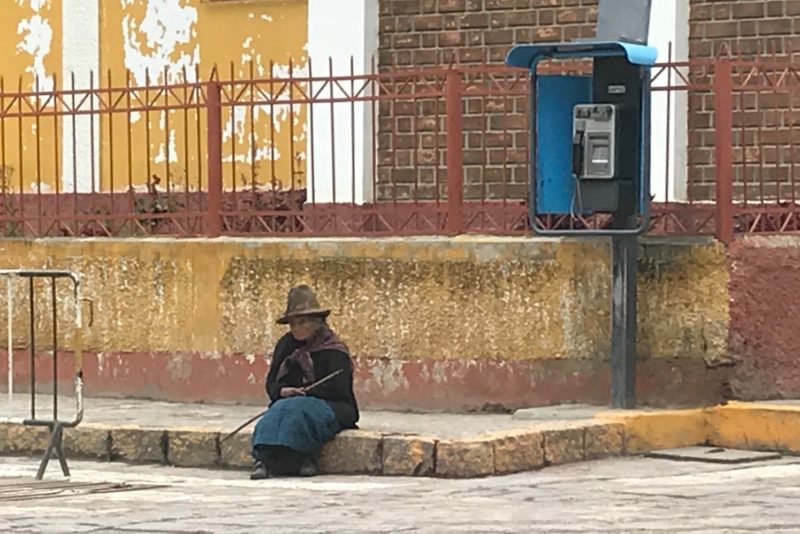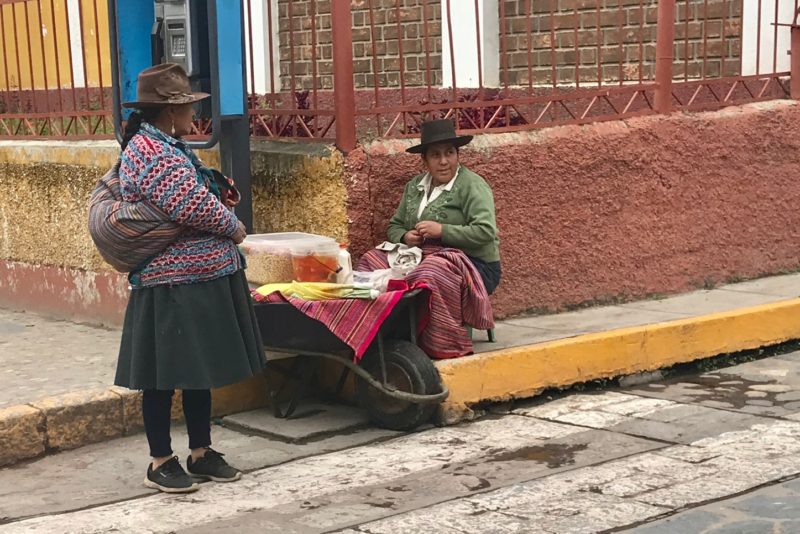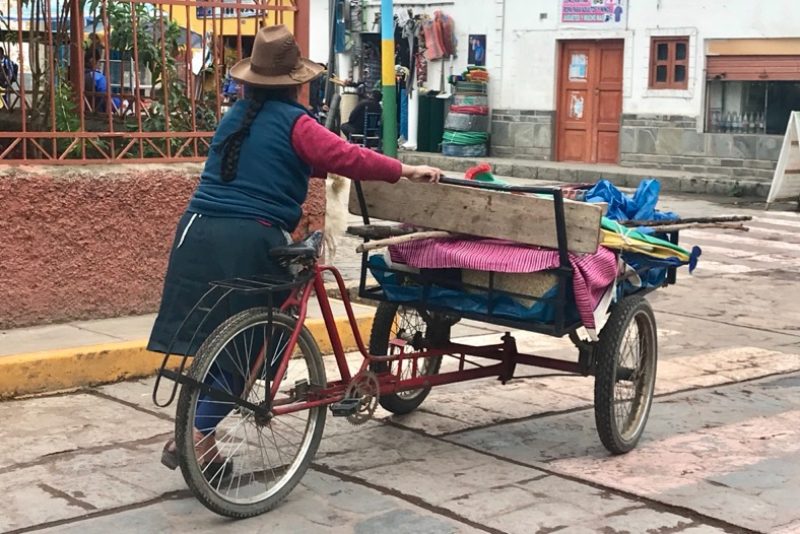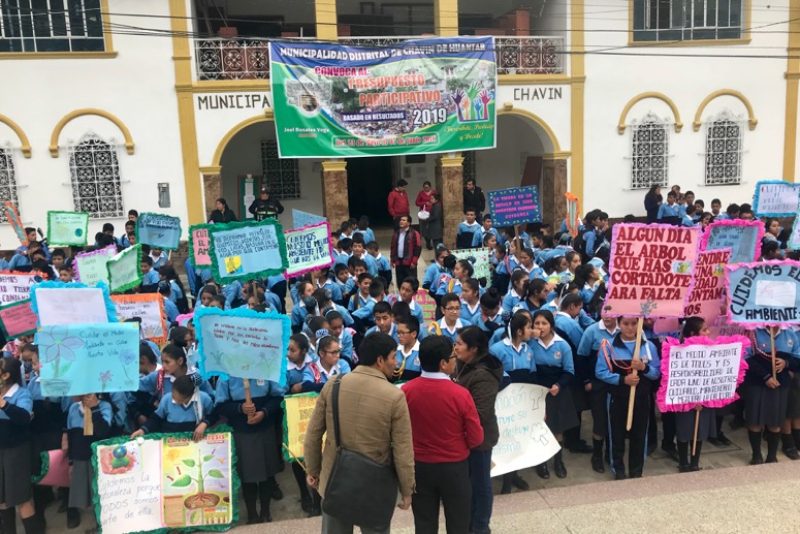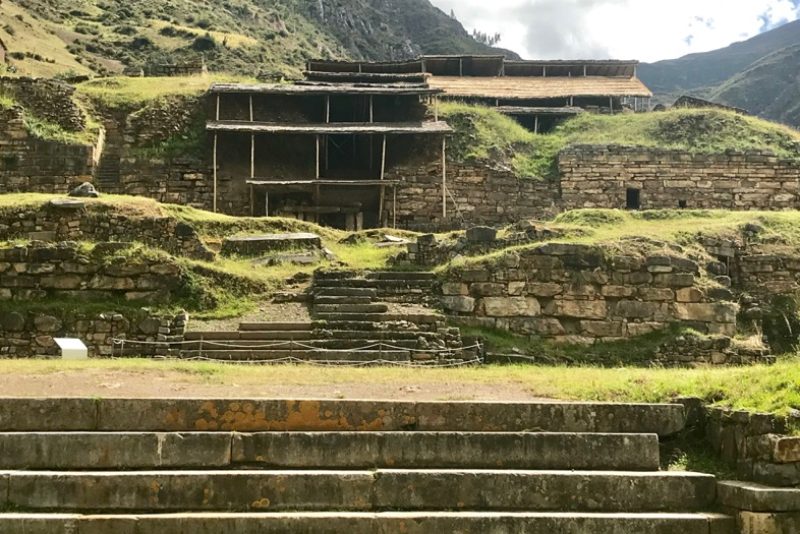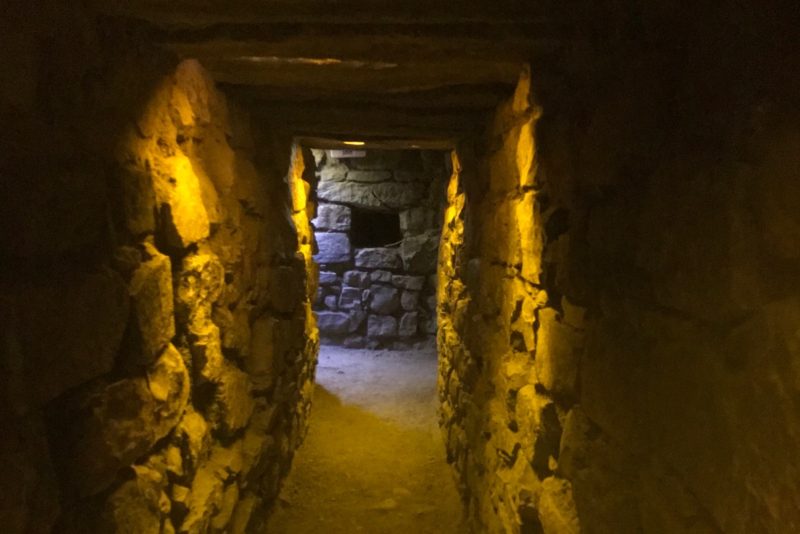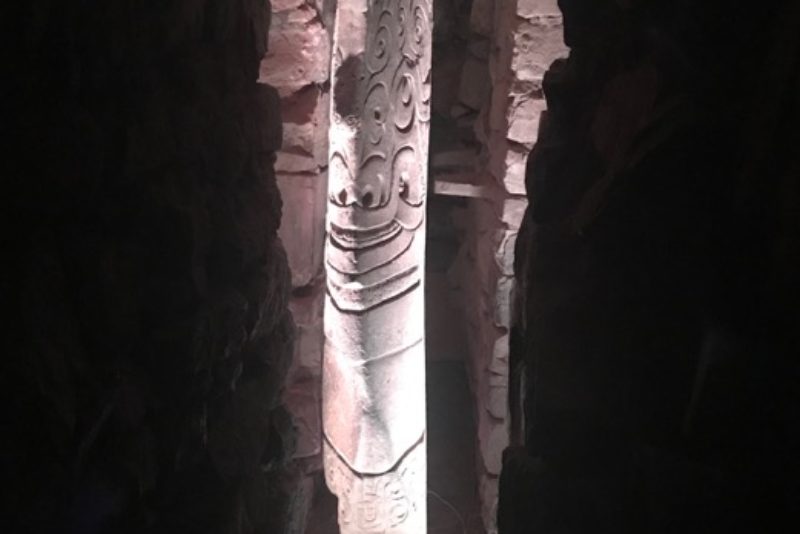We could have made it easy for ourselves and biked the shortest route to Chavin de Huantar on the eastern side of the Cordillera Blanca mountains, a paved highway with a tunnel at the high point of 4500m. Instead we took an unpaved route over a 4800m pass further south that undulated at that altitude for a tough 20km before dropping us down to 4100, before climbing again over 3 smaller passes each around 4600m, finishing with a 1600m very rough downhill to Chavin. We wouldn’t recommend the route in the opposite direction!
We struck a rough patch of weather for this leg and it tested our wardrobe to the limit, biking the last day in rain and falling snow for most of the 6 hours it took us.
Highlights – the sun when we had it (won’t take it for granted again), the mountain, lake, valley and rock landscapes (when our glasses weren’t too fogged to see them), the incredible Puya Raimondi plants, the fossilised dinasaur footprints, the unexpected soup and trout meal after a wet, cold hard morning of biking, the long steep technical downhill to Chavin, limon pie and a cuppa when we got to Chavin and the amazing hot shower at the Hostel Chavin Arqueologico.
The lowpoints – the lack of sun, packing up wet kit, the rain that would start just as the tent got packed up and we had committed to moving, slow progress that comes with biking at altitude, thinking we had reached the top of the final pass and seeing another descent and pushfest climb…
The middle section was a paved road that headed into the Minera Antimina, the largest mine in Peru and 7th largest in the world employing 70,000 people. Interestingly the traffic we shared the roads with contrasted from busses of workers, mine trucks, fancy mIning 4WD to the locals on horseback or foot. We turned off before the mine to follow a very minor road to Chavin where we enjoyed a rest day.
Nearly 3000 years ago Chavin de Huantar was a pilgrimage site for peoples wanting a religious spectacle and the more honoured pilgrims imbibed in hallucinogenic substances and sought prophesies (such as weather,crops etc) from the priests and Lanzan a 4m high stone carved monolith deep within the chambers. The site consists of outside plazas and stone buildings with passageways and chambers within. The site itself was underwhelming (hardly surprising given it’s age) but the history behind it was interesting.
We head north tomorrow on a straighter route than has been the case, and the forecast is for Sun, or so said Lanzan!
